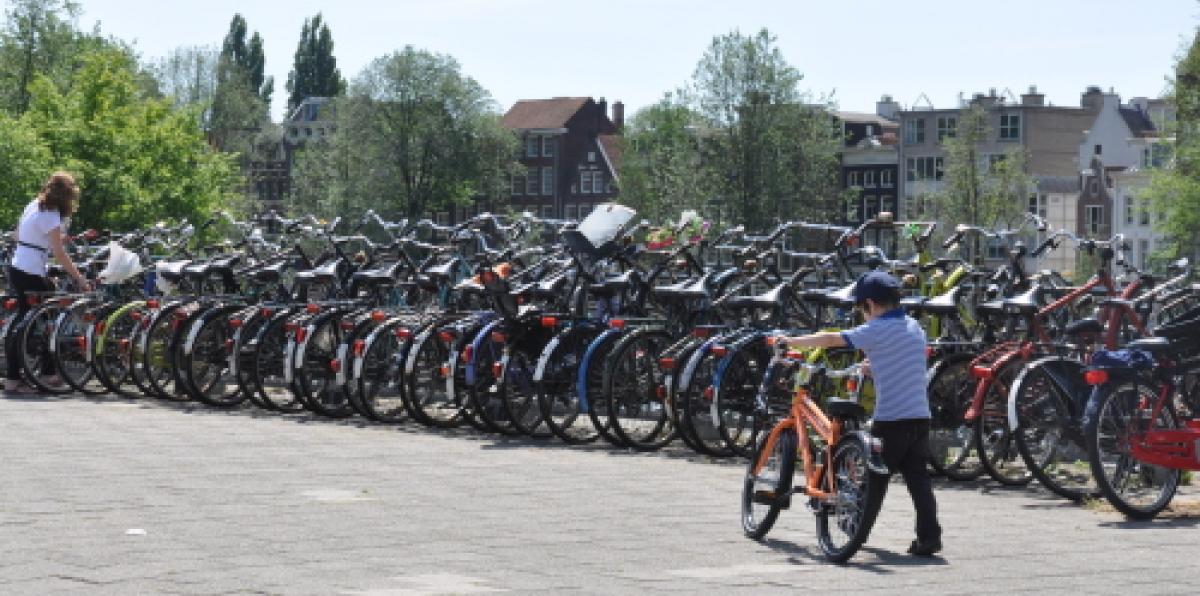“For every kilometre that a person rides on a bicycle, there is a net profit to society of 23 cents,”. “For every kilometre that a person rides in a car, there is a net loss to society of 16 cents.”
I saw the bike culture in action when I was in Copenhagen/Amsterdam/Malmo last year. It is very impressive how an industrialized societies have such strong bike cultures Colville-Andersen's 4 step to promote urban cycling seems quite attainable and worth promoting in US cities.
By Ryan Van Horne
In Copenhagen, 37 per cent of citizens bike to work, and the reason so many of them do it may surprise you.
Fifty-four per cent of cycling commuters say they do it because it’s quick and easy. That’s well ahead of 19 per cent who do it for exercise, six per cent who do it to save money and one per cent who do it for environmental reasons.
The reason for this is that Copenhagen has followed a simple philosophy to promote urban cycling, says Mikael Colville-Andersen of Copenhagenize Consulting.
“If you build it, they will come,” he said last week to a group of about 150 people who ventured out on a cold January night to hear the world’s most famous urban cycling advocate at Dalhousie.
Colville-Andersen was a speaker at a two-day workshop called Kickstand, that brought together Mobycon, a Dutch company similar to his, and some urban planners and active transportation advocates from across Atlantic Canada.
Colville-Andersen’s talk, titled Bicycle Culture by Design: Four Goals For Promoting Urban Cycling, was organized by the Halifax Cycling Coalition.
Lauralee Sim, a co-chair of the coalition, said when her group found out that Colville-Andersen was coming to town, they set about trying to organize a free public lecture.
“He’s a bit of a cycling celebrity,” said Sim. “The workshop was a two-day commitment and it cost ($600), so it’s really for people whose employers can afford to send them.”
So, on the eve of the Canada’s first Kickstand session, Colville-Andersen shared his vision with the grassroots of Halifax.
“We wanted to open it up for the whole community,” said Sim, who thanked sponsors for making it happen. (Mountain Equipment Co-Op and Dalhousie’s Office of Sustainability).
Colville-Andersen spoke for about an hour and outlined his four-step plan to promote urban cycling. It’s worked all over the world and it can work in Halifax, but whether it will is “up to you guys”, he told the audience.
Halifax has a patchwork of cycling paths that begin and end without rhyme or reason and scores poorly on the Copenhagen index -- a measure his company has created to measure a city’s bicycle friendliness. Colville-Andersen has a message for politicians or bureaucrats who argue that cycling infrastructure is too costly.
“For every kilometre that a person rides on a bicycle, there is a net profit to society of 23 cents,” Colville-Andersen said. “For every kilometre that a person rides in a car, there is a net loss to society of 16 cents.”
These numbers are reached by factoring in such things as reduced pollution, traffic congestion, productivity, and health benefits.
“Urban planners should get out on bikes and experience it,” he said.
Halifax’s hills shouldn’t be an obstacle. In hilly Aarhus, Denmark’s second-largest city, 20 per cent of the population commutes by bicycle and ultra-hilly San Francisco is experiencing a cycling revival.
“It’s a bit more challenging with hills, but it shouldn’t be a hindrance,” he said. “You don’t go straight up the hill, you just take a five-minute detour. If you just make the bike lanes, people will use them in the weirdest ways. They’ll ride hills that you never thought they would.”
The four steps
1. A2Bism: Make cycling convenient. When you can save people time, half the battle is won.
2. Marketing: Sell cycling like it’s a product; right now, cycling has an image problem of being sweaty, dangerous, difficult and belonging to a sub-culture. Cycling needs to be portrayed as mainstream, like driving a car.
3. Stop Ignoring the Bull in Society’s China Shop: Cars are an impediment to cycling culture. Traffic calming in urban cores and restrictions on large vehicles to make the streets more welcoming.
4. Re-democratization of urban cycling: Offer bike sharing or bike rental programs.



